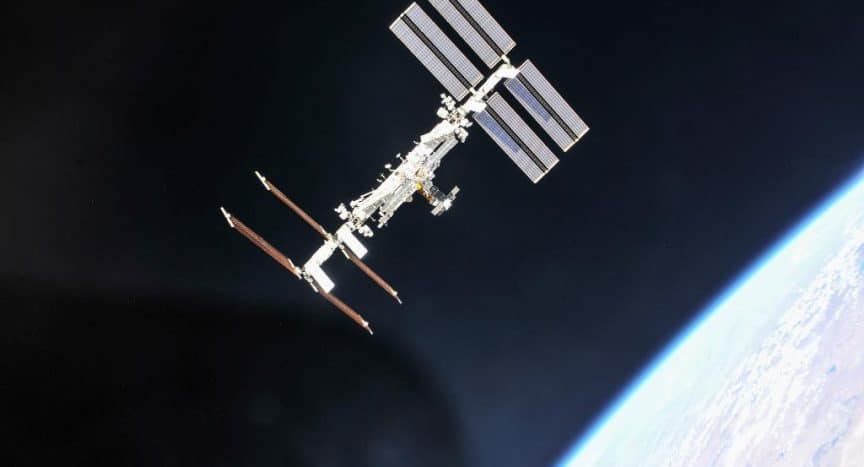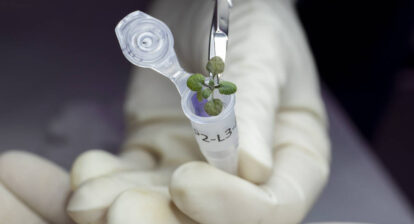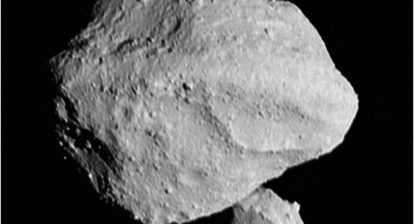As children, we all learned of Sputnik, the artificial satellite launched into low earth orbit on October 4, 1957, by the then USSR, thus beginning the entry of humans into space. The US responded with the launch of Explorer 1 a few months later on January 1, 1958, starting the Cold-War Space-Race.
Subsequently, a number of artificial satellites were launched to serve as technological and scientific laboratories, as well as for political and military purposes. I remember the infamous Skylab, which was a source of both thrill and fear to me as a child, because it had been damaged and was going to “fall on our heads and destroy the Earth”. Skylab was in-service from 1973 to 1979 and I was perversely disappointed when it disintegrated after re-entering Earth’s atmosphere and did not cause any damage to us mere mortals.
This was followed by Mir, the Soviet (and subsequently Russian) Space Station that orbited the Earth from 1986 to 2001. In 1990, the Hubble Space Telescope was launched and still remains in orbit. It has presented us with some of the most amazing and detailed images ever, increasing our understanding of the cosmos. The telescope helped astrophysicists accurately determine the rate of the expansion of the Universe, among a host of other scientific observations.
Mir was succeeded by the International Space Station, fondly known as the ISS, a floating space lab, the first component of which was launched in 1998, so it has been orbiting us for 24 years. It is now the largest artificial body in orbit around our planet and can often be seen with the naked eye. In fact, NASA actually will send you emails to let you know when the ISS will be visible at your location, if you ask them.
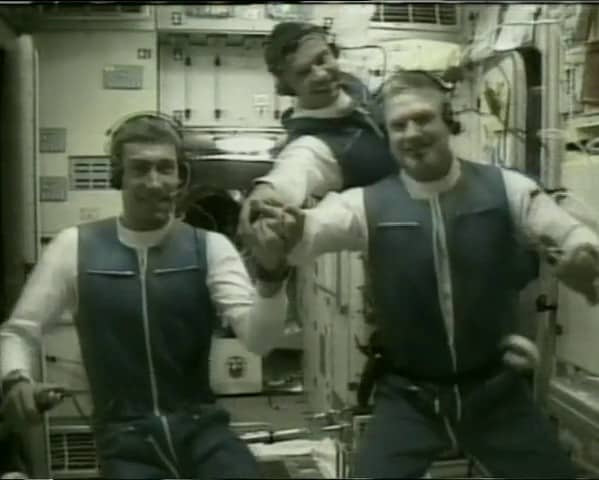
Expedition 1 crew of Sergei K. Krikalev, left, Yuri P. Gidzenko, and William M. Shepherd
talking to the Flight Control Center in Korolev, Russia, outside of Moscow, from the International
Space Station’s Zvezda Service Module
On October 31, 2000, astronaut Bill Shepherd and Russian cosmonauts Yuri Gidzenko and Sergei K. Krikalev, launched to the International Space Station, docking on November 2, 2000. And so began 22 continuous years of humans living in space, creating a world-class science lab in orbit – the longest continuous human presence in low Earth orbit. Twelve years later, in 2012 the ISS’s robotic arm captured the first ever commercial vehicle the SpaceX Dragon.
The ISS is a joint venture between the US, Russia, Japan and EU. More than 263 people from 20 countries have visited it, since the year 2000. A crew of six people live and work there at any one time. The living and working space in the station is larger than a six-bedroom house with six sleeping quarters, two bathrooms, a gym, and a 360-degree view bay window.
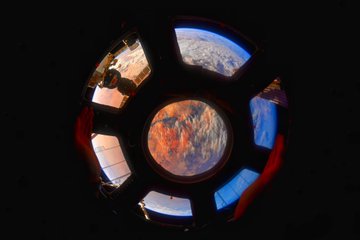
360 degree observation bay window in the International Space Station. Source: NASA

360 degree observation bay window in the International Space Station. Source: NASA
The station’s orbital path takes it over 90 percent of the Earth’s population, with astronauts taking millions of images of Earth below.
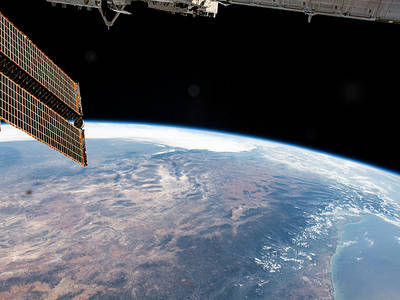
Earth from the International Space Station. Source NASA/ ISS
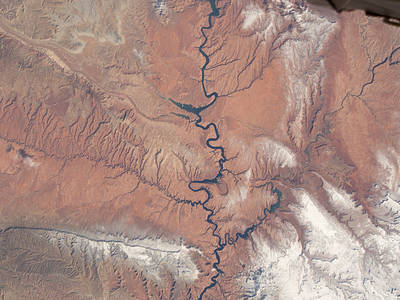
Earth from the International Space Station. Source NASA/ ISS
The purpose of the ISS is to serve as a micro-gravity and space environment research laboratory, where crew-members conduct experiments in a number of scientific fields. Thousands of experiments (3,000 in total from researchers in more than 108 countries) have been and still are conducted, resulting in thousands of scientific publications. The first research study was regarding protein crystal growth, before humans lived there, and which is helping to treat diseases and disorders on Earth.
But the most exciting thing about it is that the ISS was actually assembled in space, making it the largest structure to have been built there — ever! During its life, 253 spacewalks have been conducted by astronauts since December 1998 to maintain and repair the ISS, which are telecast live on NASA TV. Forget all those Hollywood movies in space showing space walks, you can watch the real action live!

Astronauts Conducting Experiments aboard the International Space Station. Source: ISS Research (Twitter)

An astronaut conducting a spacewalk outside the International Space Station. Source: NASA
The station is 260 miles (418 km) above the Earth. In 24 hours it makes 16 orbits of our planet, travelling through 16 sunrises and sunsets at five miles per second (eight km per second) or 17,500 mph (28,159 kmph), completing one orbit every 90 minutes. A spacecraft can arrive at the ISS in six hours after launching from Earth and eight spaceships can be connected to the space station at once. The Water Recovery System aboard the Station, recycles 93 percent of the waste water, which reduces the amount of water that needs to be carried up by cargo spacecraft by 65 percent. The 55-foot robotic Canadarm2 has seven different joints and two end-effectors, or hands, and is used to move entire modules, deploy science experiments and even transport spacewalking astronauts.
With the rise of social media, astronauts now tweet images from space, as well as videos of them going about their daily business and the impacts of micro-gravity on them. Commander Chris Hadfield made tweeting from space famous and in fact released an album from the ISS.
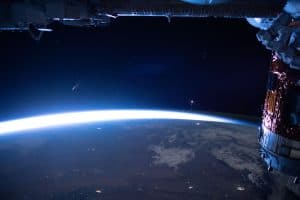
Comet Neowise from the ISS. Source: NASA/ ISS Expedition 63
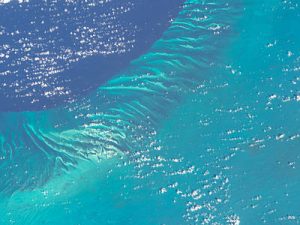
Earth from the International Space Station. Source NASA/ ISS
NASA astronaut Scott Kelly completed a single mission aboard the International Space Station of 340 days on March 1, 2016. NASA astronaut Christina Koch’s first mission ended after 328 days on February 6, 2020. Peggy Whitson set the US record on September 2, 2017, for most cumulative days living and working in space by a NASA astronaut at 665 days. In May 2020, SpaceX launched its first astronauts, NASA’s Bob Behnken and Doug Hurley, in its new Crew Dragon spaceship, from the Kennedy Space Center in Florida. It was the first time that astronauts were sent into orbit in an American rocket, launching from the United States, since the previously used space shuttles were retired in 2011. From 2011 until 2020, NASA had been buying seats aboard the Russian Soyuz spacecraft, launched from Kazakhstan to send their astronauts into orbit.
Till the year 2001, all who visited the ISS were government professional astronauts. An American businessman Dennis Tito, became the world’s first space tourist in 2001, buying a ticket for a seat on a Russian Soyuz, which reportedly cost $20 million. Subsequently, six more wealthy space tourists visited over the next six years. Since 2011 no tourists have flown into orbit after NASA’s space shuttle programme was retired. However, now private companyies, such as Axiom Space, are planning tourist trips.
According to NASA: “EXPEDITION 68 began in September 2022 and ends in March 2023. This expedition will include research investigations focused on biology, Earth science, human research, physical sciences and technology development, providing the foundation for continuing human spaceflight beyond lowEarth orbit to the Moon and Mars.”
I cannot help thinking that this is a great time to be alive. Space exploration, and experiments, such as those done in the ISS, are opening our horizons and making us understand the Universe in ways we never have before. So, on its 22nd anniversary let us take a moment and look up at the intrepid people who are helping us understand the cosmos and our role in it.
Images source and credit: International Space Station/NASA. You can finding sighting opportunities here.
